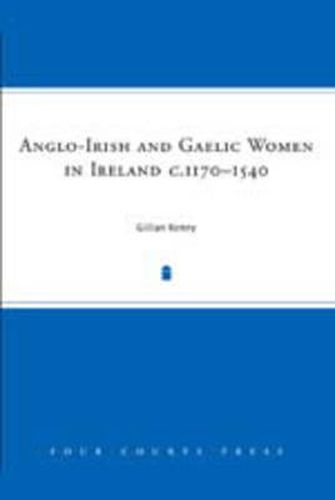Readings Newsletter
Become a Readings Member to make your shopping experience even easier.
Sign in or sign up for free!
You’re not far away from qualifying for FREE standard shipping within Australia
You’ve qualified for FREE standard shipping within Australia
The cart is loading…






Gillian Kenny provides a coherent picture of the lives of women in medieval Ireland through an examination of their marital circumstances. By comparing and contrasting the differing lives of Anglo-Irish and Gaelic singlewomen, wives, widows and nuns of late medieval Ireland, the author tries to identify how their functions and roles in society were affected by the differing rights enjoyed and by the restrictions imposed by their different societies. The book is constructed to reflect thematically the standard marital progression of women in medieval Ireland (both Gaelic and Anglo-Irish) from singlewomen to wives to widows. The machinery of church and state dominated and controlled how women conducted their lives. Within these structures, however, women were able, to differing extents, to transmit and receive land and movables, to work for a living as tradeswomen, craftswomen or merchants, or to devote themselves to the spiritual life as singlewomen, wives or widows.
$9.00 standard shipping within Australia
FREE standard shipping within Australia for orders over $100.00
Express & International shipping calculated at checkout
Gillian Kenny provides a coherent picture of the lives of women in medieval Ireland through an examination of their marital circumstances. By comparing and contrasting the differing lives of Anglo-Irish and Gaelic singlewomen, wives, widows and nuns of late medieval Ireland, the author tries to identify how their functions and roles in society were affected by the differing rights enjoyed and by the restrictions imposed by their different societies. The book is constructed to reflect thematically the standard marital progression of women in medieval Ireland (both Gaelic and Anglo-Irish) from singlewomen to wives to widows. The machinery of church and state dominated and controlled how women conducted their lives. Within these structures, however, women were able, to differing extents, to transmit and receive land and movables, to work for a living as tradeswomen, craftswomen or merchants, or to devote themselves to the spiritual life as singlewomen, wives or widows.